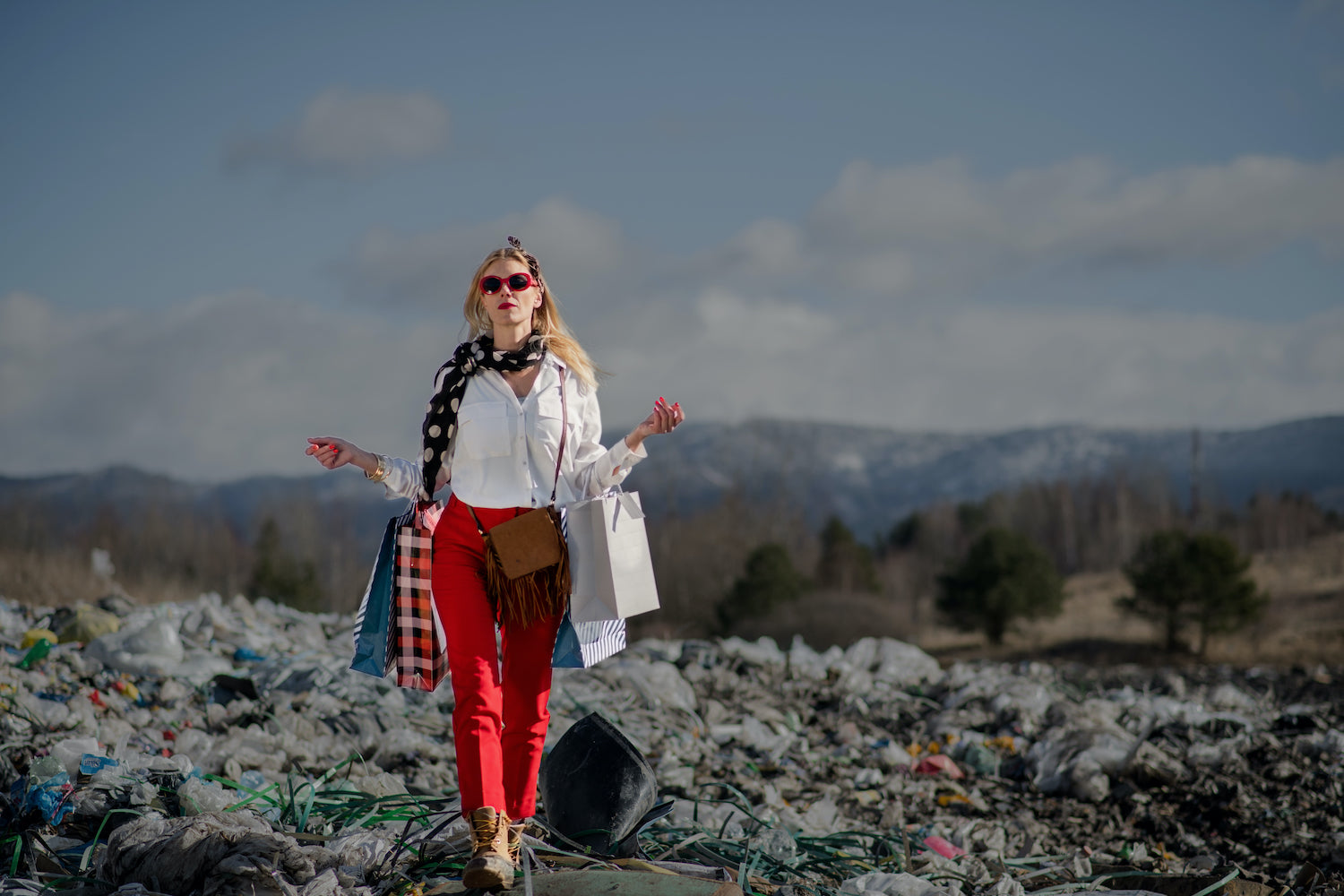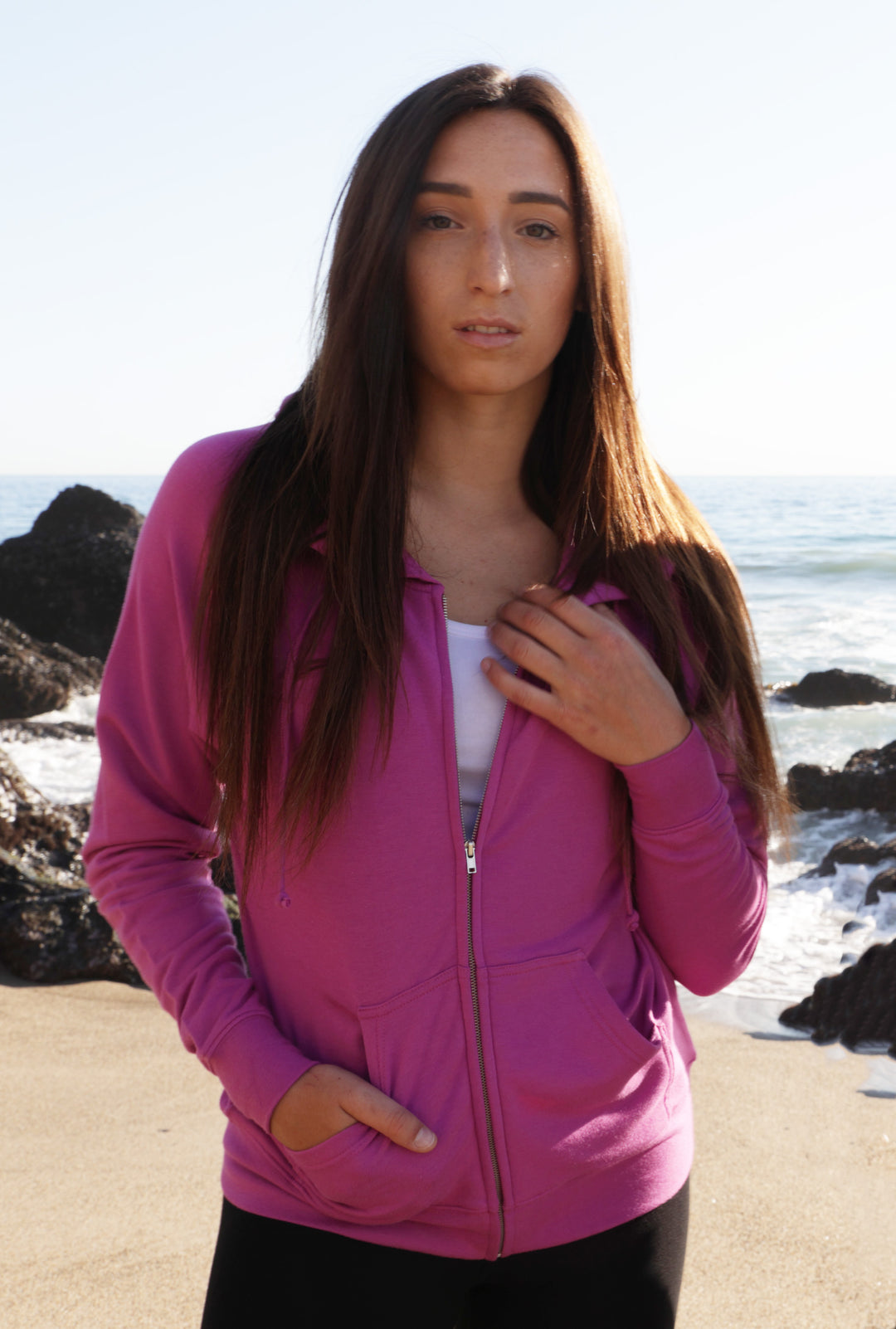The terms "fast fashion" and "slow fashion" have only started flying around in the last decade or so, and especially in reference to things like sustainability and eco-friendliness - two things the fashion industry isn't exactly well-known for.
Compared to fast fashion's low-priced, low-quality and low-durability, mass-produced, landfill-heading clothes, slow fashion is supposed to be the happy, hippy way of still being able to step out in style, but without hurting anyone or anything in the process.
But is slow fashion just a marketing spin? Is it fast fashion's less trendy cousin who just turns out to be more high maintenance? In this article, we take a look at how fast fashion and slow fashion compare, and how these two very different approaches to fashion can affect the environment and us, the consumers.
What is fast fashion?
Fast fashion is what we're used to as everyday consumers. High fashion looks take to the runways, but editors and influencers aren't the only people scrambling to create budget looks that mirror what's currently in vogue.
Apparel companies the world over are also pushing their workers in emerging economies to sew faster to keep up with their customer's growing appetites for cheap, fashionable, "Instagrammable" clothes.
Fast fashion brands mass produce clothes cheaply in order to get them into the stores and onto our bodies, pronto. It's even available to us literally 24/7 with online shopping. We don't even have to move our butts to receive cheap, crappy clothes in cardboard boxes.
Fast fashion is now a part of the fabric of our society, and a huge part of our everyday lives. Fast fashion is loved by many because it's so affordable and accessible. A whole new outfit for under $40? Heck yeah! Being fashionable without being broke certainly has its appeal!
Especially when nobody wants to be caught dead in something that's "so last season". Replacing one's entire wardrobe has become the norm - out with the old and in with the new - who cares if it all lands up in a landfill, right?
What's wrong with fast fashion?

You know what they say about things that seem too good to be true.
The problem with fast fashion is that it comes at a price. It's just a matter of who's paying for it, and if you can even tell if you're paying for it.
Is there actually a way to produce clothing that fast and cheap without cutting corners? Fact is, "it's the communities in deprived countries paying the price for high street fashion."
We've all heard the horror stories about sweatshop workers being forced to work inhumanely long days under hazardous working conditions for a pittance that borders on slave labor. And what do we do? We close one eye to the human rights violations that might be taking place while we parade our new fast fashion finds over on this side of the world.
It doesn't help either that the fashion industry is the second most water-intensive industry in the world. The amount of water needed to feed the fast fashion industry per year - around 90 billion cubic meters - is enough drinking water for every single person in the world for at least three, if not four, years. Yet more than 3 billion people out there still experience water scarcity. How is this making any sense?
In areas where fast fashion is produced, so much water routed to the factories can lead to droughts amongst the population who rely on water for survival. Can we really argue that our fast fashion looks are more important than someone else's livelihood?
How fast fashion hurts the environment

And what happens to that fast fashion shirt when you toss it away? The popularity of fast fashion just creates more clothes that are almost directly headed to the world's already overflowing landfills, only making a pit stop along the way on our bodies, if only just for a day, a week, a month, a year. And, because they're not biodegradable, our clothes are actually going to outlive us by hundreds of years in their new trash heap of a home.
"The more clothes get thrown away, the more new clothes have to be made, which fuels an endless waste cycle. This depletes our resources and increases the pollution that comes from major factories."
The pollution from factories is only but one area of environmental harm that we can see. Very often, all sorts of toxic chemicals are used to produce the brilliant colors and prints we love, and textile companies end up discharging millions of gallons of chemically infected water into our waterways... which even makes its way up the food chain. Feel like eating green sweater fish, anyone? Nope, we didn't think so. Worst of all, there's no way you can actually see if you're eating food that has been contaminated by toxic chemicals or not.
It's so bad that in China, the State's Environmental Protection Administration declared that nearly one third of the country's rivers are classified as "too polluted for any direct human contact." Is it a coincidence that this is one of the top countries printed on our fast fashion labels?
What is slow fashion?

Like a superhero responding to the call of people wanting a way out of the vicious cycle of fast fashion, slow fashion has come to the fore, wearing its bamboo underwear on the outside and all.
In some ways, slow fashion is basically everything fast fashion is not. It's about conscious shopping with sustainability in mind. It's about designing and producing clothing while taking care not to harm the environment. It's about exploring sustainable sources of textiles, better working conditions, and working together with communities to improve their quality of life. And for us consumers, slow fashion is about quality. A word never uttered on the lips of any fast fashion lover. It just isn't possible.
“I am often asked not what I am wearing but who because in fashion, the idea behind the clothes – the label, the designer, the collection – have more meaning than the garment itself. However, there’s a bigger story to be told about the conditions in which our clothes are made. It’s also about the resources used and the impact it has on communities.” ~ Emma Watson
How slow fashion is helpful to the environment
Slow fashion is literally about slowing the cycle of waste. Research shows that slow fashion "inspires consumers to buy fewer garments of higher quality, made... from sustainable materials."
Fabrics made from sustainable sources such as bamboo and hemp are better for the environment because they can be produced with less water and less pollution, and come from natural resources that can repopulate on their own, without any destruction of habitat, or resource-depletion.
It's easy to think that if your fabric comes from a plant, any plant, that it is grown the same way, but that couldn't be further from the truth. Textiles are usually created in an industry that requires about 3% of the world's water supply, 5% of the world's energy, and 25% of the world's pesticides.
Yet, did you know that bamboo grows so well on its own, it doesn't require any watering, pesticides or insecticides to help it grow? Not only does it not require the use of hazardous chemicals, a bamboo plantation even helps with soil fertility, prevents soil erosion, and produces oxygen for us all.
The manufacturing process for slow fashion also takes the environment firmly into consideration. No more toxic dyes being released into our waterways, no more thousands of chemicals being used to create synthetic clothes that release microplastics into the oceans when we toss them in our washing machines.
Slow fashion is about getting serious about less - less chemicals, dyes, energy, resources, waste, and overall, less negative impact on the environment.
Fast fashion vs Slow fashion: It's our choice

Knowing what we know about fast fashion vs slow fashion doesn't make any impact on the environment or the fashion industry though. Only one thing does, and that's action.
As consumers, there's probably nothing we can do about fast fashion. It's here, and it looks like it's here to stay. Slow fashion is our power and our placard to demand better quality, better working conditions, and better treatment of our environment.
But slow fashion isn't just about shelling out more money for a "greener" label. It's about a change of mindset. In many ways, slow fashion is here to remind us that "cheap is not necessarily good, and more is not better."
Very often, less is more. Who hasn't been guilty of peering into our bursting wardrobes of fast fashion pieces and yet feeling like we've got nothing to wear? The question to ask is, "Do I really need all that stuff?"
Sometimes, a minimalist wardrobe of a few high-quality pieces that we know we ALWAYS look good in are all we need. "It's about cutting out the clutter in your life and concentrating on what's really important."
Besides, when you have classic, timeless pieces of amazing, luxurious clothes that feel great on your skin, and last wear after wear, wash after wash, season after season, why would you need anything more?










